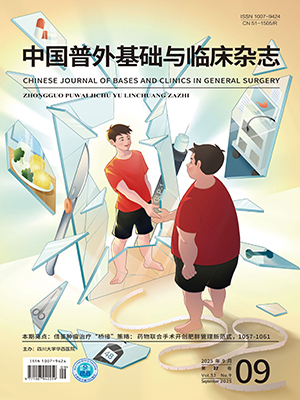ObjectiveTo study the techniques of mimicking multifactors induced acute pancreatitis in rat by slow-release pump. MethodsSeventy-five healthy SD rats were randomly divided into slowrelease pump group (SRP group), traditional group (TAP group), and sham operation group (SO group). Four percent sodium taurocholate was injected through pancreatobiliary duct of rats directly and retrogradely in TAP group and by slow-release pump in SRP, which mimicked AP pathogenesis from selfdigestion, obstruction, cytokine activation, and many other mechanisms. Detection of serum amylase and pancreatic myeloperoxidase (MPO) leves, observation of pancreatic histological changes and scoring of pancreatitis severity in three groups were performed at 1, 6, 12, and 24 h after successful model induction, respectively. ResultsSerum amylase and pancreatic MPO levels, and the pathological grading score of rats were significantly higher in SRP and TAP groups than in SO group at different time point (P lt;0.05 or P lt;0.01), while they were lower in SRP group than in TAP group with a slowly rising tendency, and there were significant differences at 6 and 12 h time point, respectively (P lt;0.05 or P lt;0.01). Conclusions Slow-release pump technique can induce AP through increasing the pressure of pancreatic duct, tissue edema and sustained releasing inflammation factors by mimicking the pathophysiological process of pancreatitis. Slow-release pump can be kept in place to monitor and control the pressure of pancreatic duct. Slow-release pump method is relatively moderate and easy to manage with a lower mortality.
Citation: YAN Kun,LI Yiming,JI Zongzheng,CHEN Xi,WU Tao,ZHANG Xinwu,ZHANG Yan.. Establishment of Rat Model of Acute Pancreatitis by Slow-Release Pump. CHINESE JOURNAL OF BASES AND CLINICS IN GENERAL SURGERY, 2011, 18(7): 717-727. doi: Copy
Copyright © the editorial department of CHINESE JOURNAL OF BASES AND CLINICS IN GENERAL SURGERY of West China Medical Publisher. All rights reserved




